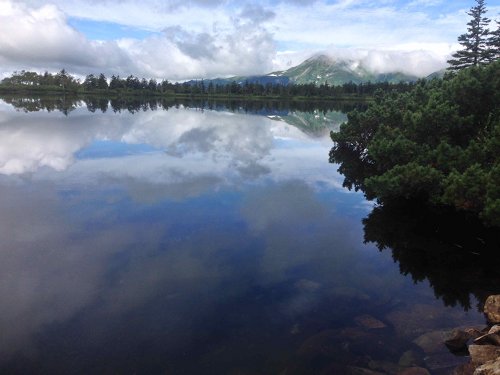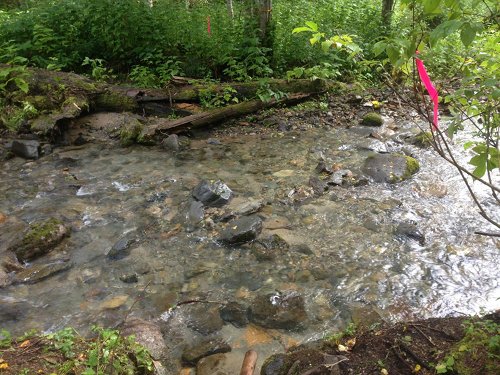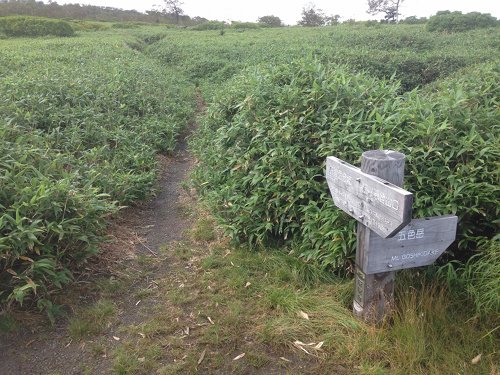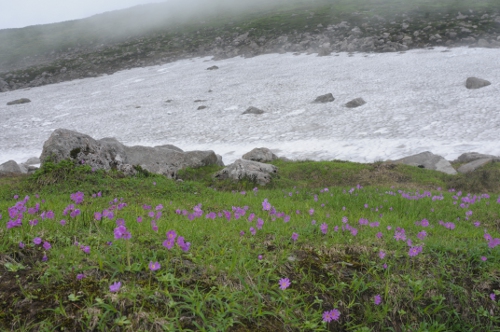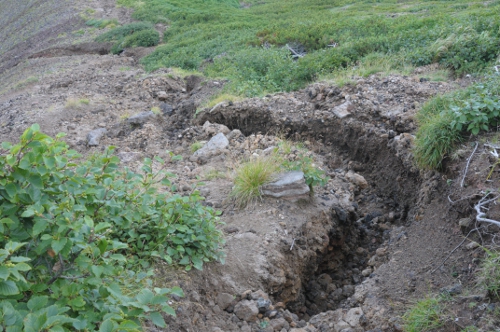On the Mt. Aka course, the Gentiana algida f. igarashii and Bryanthus gmelinii are blooming in a few places near the peak; however, almost no other conspicuous flowers are seen. At Daiyon Sekkei, Sieversia pentapetala, Phyllodoce aleutica, Arnica unalaschcensis var. unalaschcensis, Veronica stelleri var. longistyla, and Gentiana nipponica can be seen, although it must be said that the flowering season has nearly ended along most of the course.
The only snowy gorge on the Mt. Aka course trail is a roughly 40-meter area that remains at Daini Kaen.
Photo: Primula cuneifolia var. cuneifolia at Daini Kaen, Mt. Aka Aug. 9
